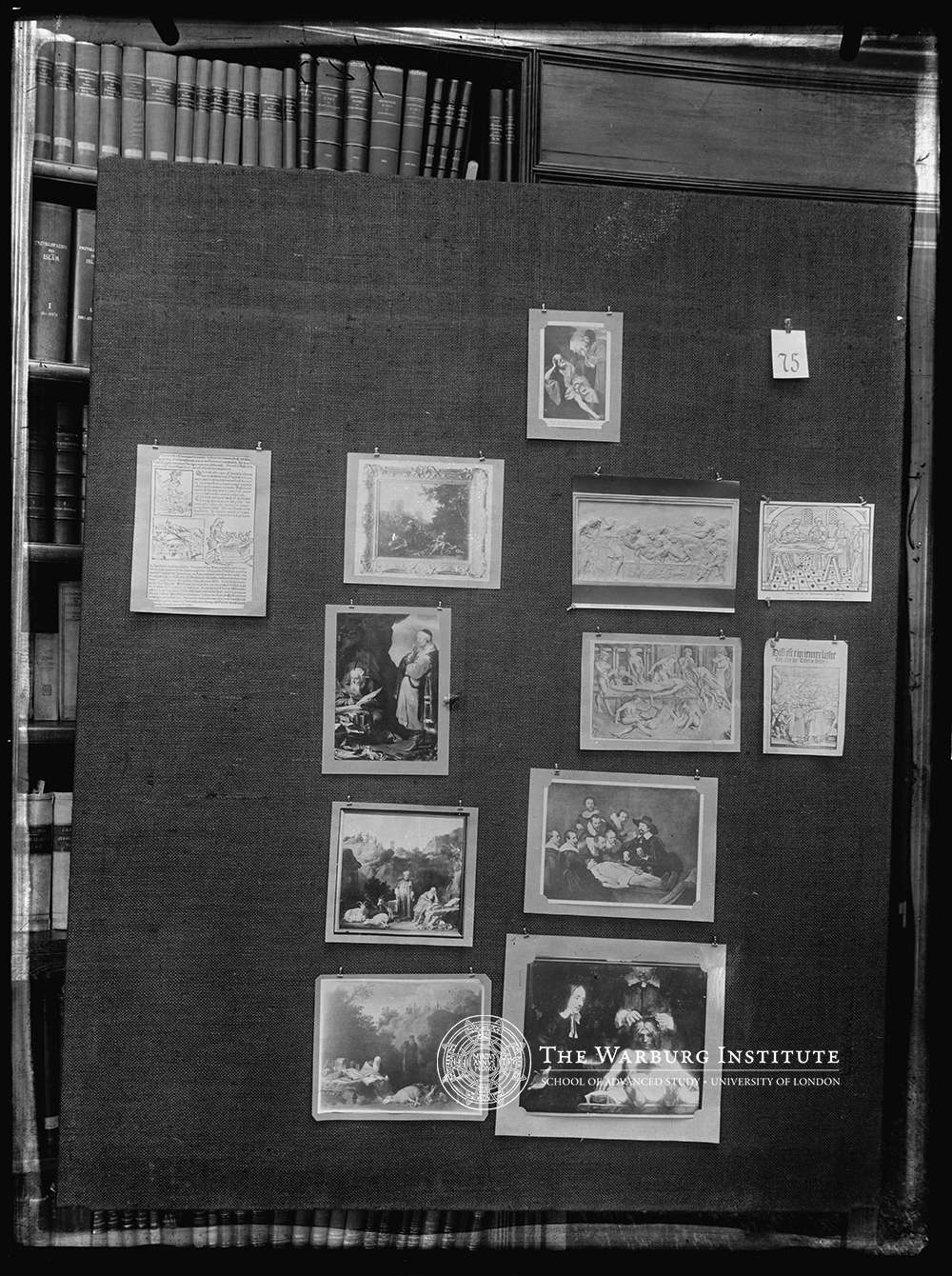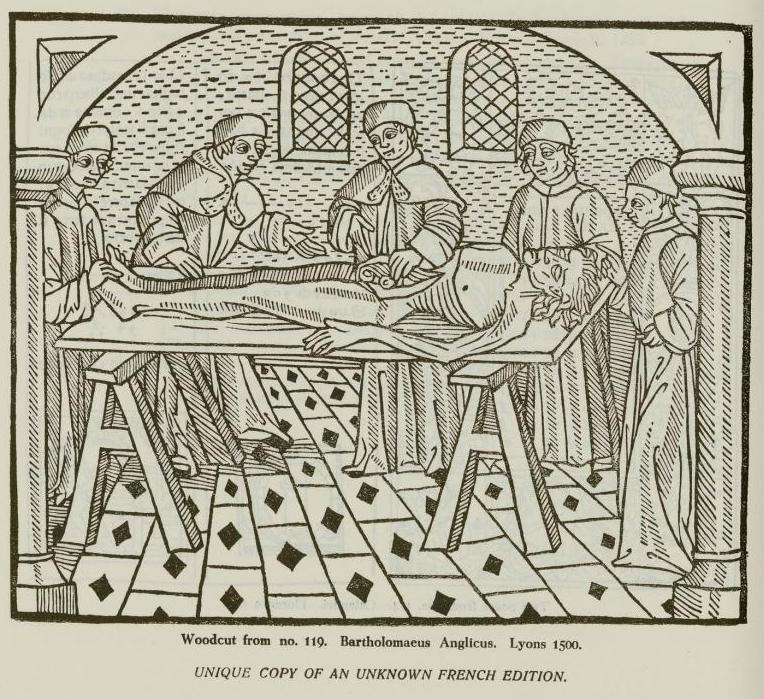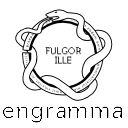Mnemosyne Atlas 75
Teatri della morte tra pathos e logos
Emancipazione della pratica intellettuale dall’antichità all’età moderna (ancora in esempi di artisti del Nord, XVII secolo): un percorso dall’'anatomia magica' animale (prassi mantica dell’epatoscopia) all’anatomia scientifica umana, passando per la ricerca già democritea della sede fisica dell’anima. Dalla contemplazione patetica (compianto funebre) alla contemplazione scientifica del corpo (il tavolo anatomico di Rembrandt), in relazione alla meditazione spirituale sulla morte (cfr. Carpaccio, tav. 42).
Theater of Death: pathos and logos
Emancipation of intellectual practice from Antiquity to the Modern era (exemplified in Northern 17th century works of art): a path from ‘anatomic magic’ practiced on animals (divinatory use of hepatoscopy), to scientific anatomy on humans, through (Democritean) research on the physical location of the soul. From the pathetical contemplation of the dead (mourning) to the scientific contemplation of the corpse (Rembrandt’s Anatomy Lesson), in relation to the spiritual meditation on Death (see Carpaccio, plate 42).

Appunti di Aby Warburg (1929)
Demokrit. Anatomie
Democrito, anatomia.
Appunti di Aby Warburg e collaboratori (1929)
Magische Anatomie. Gedärmschau – Suche nach dem Sitz der Seele. Wissenschaftl. Anatomie = Kontemplation durch Einströmen der Totenklage. Tieranatomie – Menschenanatomie pathetisch und kontemplativ [vgl. Carpaccio].
Anatomia magica. Aruspicina – ricerca della sede dell'anima. Anatomia scientifica = contemplazione mentre è in corso la lamentazione funebre. Anatomia animale – anatomia umana patetica e contemplativa [cfr. Carpaccio].
Appunti di Gertrud Bing (1940 ca)
Die “interesselose” Betrachtung des Mensch. Körpers im Gegensatz zur 1) mirakulösen (Lykosthenes) 2) magischen zu Weissagungszwecken (Demokrit + Heraklit) 3) Affectbetonten (Totenklage) 4) ein verleibenden (Totenfresser). Demokrit + Heraklit als Vertreter des Wendepunktes. Die Weissagungsleber wird zum Objekt der (philosophischen) Kontemplation. 1. Anatomie bewahrt das formale Schema der Totenklage resp. Grablegung (ebensowie d. gleichfalls medizinische Holzschnitt des Anglicus).
La considerazione “disinteressata” del corpo umano in contrasto con: 1) il miracoloso (Licostene) 2) il magico a scopo divinatorio (Democrito + Eraclito) 3) l’enfatizzazione del sentimento (lamentazione funebre) 4) l’incorporazione (mangiare i cadaveri). Democrito + Eraclito come rappresentanti del punto di una di svolta. Il fegato divinatorio diventa oggetto di contemplazione (filosofica). L’anatomia conserva lo schema formale del lamento e della sepoltura (proprio come la xilografia medica di Anglicus).
Appunti di Aby Warburg (1929)
Demokrit. Anatomie
Democrito, anatomy.
Notes by Aby Warburg and coll. (1929)
Magische Anatomie. Gedärmschau – Suche nach dem Sitz der Seele. Wissenschaftl. Anatomie = Kontemplation durch Einströmen der Totenklage. Tieranatomie – Menschenanatomie pathetisch und kontemplativ [vgl. Carpaccio].
Magical anatomy. Haruspication – search for the seat of the soul. Scientific anatomy = contemplation through incorporation of the lament for the dead. Animal anatomy – human anatomy, pathos and comtemplation [cf. Carpaccio].
Notes by Gertrud Bing (ca. 1940)
Die “interesselose” Betrachtung des Mensch. Körpers im Gegensatz zur 1) mirakulösen (Lykosthenes) 2) magischen zu Weissagungszwecken (Demokrit + Heraklit) 3) Affectbetonten (Totenklage) 4) ein verleibenden (Totenfresser). Demokrit + Heraklit als Vertreter des Wendepunktes. Die Weissagungsleber wird zum Objekt der (philosophischen) Kontemplation. 1. Anatomie bewahrt das formale Schema der Totenklage resp. Grablegung (ebensowie d. gleichfalls medizinische Holzschnitt des Anglicus).
The “disinterested” consideration of the human body in contrast to: 1) the miraculous (Lycosthenes) 2) the magical for the purpose of divination (Democritus + Heraclitus) 3) the emphasis on sentiment (funeral lamentation) 4) incorporation (eating corpses). Democritus + Heraclitus as representatives of a turning point. The divinatory liver becomes an object of (philosophical) contemplation. Anatomy retains the formal schema of lament and burial (just like Anglicus’ medical engraving).

1. Guido Reni, I santi Pietro e Paolo, olio su tela, 1605, Milano, Pinacoteca di Brera
2. Epatoscopia, da Conrad Lycosthenes, Wunderwerck oder gottes unergründliches vorbilden (...), Basel 1557, p. CXCIX
3. Nicolaes Berchem, Ippocrate e Democrito, dipinto, 1650 ca., Blaschkow, Collezione G. v. Mallman
4. Artista dell'Italia settentrionale (padovano?), La sepoltura di Cristo con un sarcofago antico decorato, bassorilievo bronzeo, 1480 ca., Wien, Kunsthistorisches Museum
5. Scena di anatomia, xilografia da Bartholomaeus Anglicus, Le propriétaire des choses, livre V, Lyon 1500
6. Jacob Adriaensz Backer, Ippocrate e Democrito, dipinto, 1630, Milwaukee, Alfred Bader Collection
7. Jacopo Francia, Compianto del condottiero Gattamelata de Narni, acquaforte su rame, 1525 ca.
8. Scena di anatomia, xilografia, frontespizio della farsa carnascialesca Jemerliche clag über die Todten fresser, Basilea (Pamphilus gengenbach) 1521-1525
9. Nicolaes Moeyaert, Ippocrate e Democrito, dipinto, 1636, Den Haag, Mauritshuis
10. Rembrandt, La lezione d'anatomia del dottor Nicolaes Tulp, dipinto, 1632, Den Haag, Mauritshuis
11. Nicolaes Moeyaert, Ippocrate e Democrito, dipinto, 1635 ca., Nijmegen, Stichting Reinier Post
12. Rembrandt, La lezione d'anatomia del dottor Jan Deyman, dipinto, 1656, frammentato dal 1723, Amsterdam, Rijksmuseum


75_1 | Guido Reni, I santi Pietro e Paolo, olio su tela (197 x 140 cm.), 1603-1604 ca. Milano, Pinacoteca di Brera.
In Tavola: riproduzione fotografica.
75_1 | Guido Reni, Paul rebukes the Repentant Peter, oil on canvas (197 x 140 cm.), 1603-1604 c. Milan, Pinacoteca di Brera.
In the panel: photographic reproduction.

75_2 | Epatoscopia, da Conrad Lycosthenes, Wunderwerck oder Gottes unergründliches vorbilden (...), Basel 1557, p. 199. Xilografia (30 cm. h.).
In Tavola: riproduzione fotografica.
75_2 | Haruspicy. From: Conrad Lycosthcncs, Wundcrwerck oder Gottes unergründliches Vorbilden (...), Basel 1557, p. 199. Woodcut (30cm. h.) .
In the panel: photographic reproduction.

75_3 | Nicolaes Berchem, Ippocrate e Democrito, olio su tela (67,5 x 81,4 cm), 1650 ca. Collocazione ignota.
In Tavola: riproduzione fotografica.
75_3 | Nicolaes Berchem, Hippocrates Visiting Democritus of Abdera, oil on canvas (67.5 x 81.4 cm), 1650 c. unknown location.
In the panel: photographic reproduction.

75_4 | Artista dell'Italia settentrionale (Andrea Mantegna?), La sepoltura di Cristo con un sarcofago antico decorato, bassorilievo bronzeo (24,4 x 44,9 x 2 cm.), 1480 ca., Wien, Kunsthistorisches Museum.
In Tavola: riproduzione fotografica.
75_4 | Attributed to Andrea Mantegna, Entombment of Christ, bronze relief with an anriquely decorated sarcophagus (24.4 x 44.9 x 2 cm.), 1480c. Vienna, Kunsthisrorisches Museum.
In the panel: photographic reproduction.

75_5 | Scena di anatomia. Tratto da: Bibliotheca medii aevi: 320 incunabula systematically arranged including specimens of rare presses, woodcut books, fine bindings; with 26 plates and 78 illustrations in the text, Vienna 1929, tav. XV. Riproduzione di una xilografia (14,2 x 17,5 cm.) di Bartholomaeus Anglicus, Le propriétaire des choses, livre V, Lyon: Jan Jenin le Dyamantier, 1500.
In Tavola: riproduzione fotografica.
75_5 | Anatomical Scene. From: Bibliotheca medii aevi: 320 incunabula systematically arranged including specimens of rare presses, woodcut books, fine bindings; with 26 plates and 78 illustrations in the text, Vienna 1929, plate XV. After Bartholomaeus Anglicus, Le propriétaire des choses, livre V, Lyon: Jan Jenin le Dyamantier, 1500. Woodcut (14.2 x 17.5 cm.).
In the panel: photographic reproduction.

75_6 | Jacob Adriaensz Backer, Ippocrate e Democrito, olio su tela (94 x 64 cm.), 1630 ca. Milwaukee, Alfred and Isabel Bader collection.
In Tavola: riproduzione fotografica.
75_6 | Jacob Adriaensz Backer, Hippocrates Visiting Democritus of Abdera, oil on canvas (94 x 64 cm.), 1630 c. Milwaukee, Alfred and Isabel Bader collection.
In the panel: photographic reproduction.

75_7 | Allaert Claesz (su disegno di Jacopo Francia), Lamentazione sul Gattamelata, incisione a bulino (42,5 cm. x 29 cm.), post 1555.
In Tavola: riproduzione fotografica.
75_7 | Allaert Claesz after Jacopo Francia, The Lamentation of the Condottiere Gattamelata da Narni, engraving (42,5 cm. x 29 cm.), after 1555.
In the panel: photographic reproduction.

75_8 | Scena di cannibalismo. Frontespizio della farsa carnascialesca Pamphilus Gengenbach, Diß ist ein iemerliche clag uber die Todtenfresser, Augsburg: Heinrich Steiner, 1522. Xilografia (28 cm. h.).
In Tavola: riproduzione fotografica.
75_8 | Cannibal Scene. Title page from: Pamphilus Gengenbach, Diß ist ein iemerliche clag uber die Todtenfresser, Augsburg: Heinrich Steiner, 1522. Woodcut (28 cm. h.).
In the panel: photographic reproduction.

75_9 | Nicolaes Moeyaert, Ippocrate e Democrito, olio su tavola (80 x 85 cm.), 1636, Den Haag, Mauritshuis.
In Tavola: riproduzione fotografica.
75_9 | Nicolaes Moeyaert, Hippocrates Visiting Democritus of Abdera, oil on panel (80 x 85 cm.), 1636. The Hague, Mauritshuis.
In the panel: photographic reproduction.

75_10 | Rembrandt Harmenszoon van Rijn, La lezione d'anatomia del dottor Nicolaes Tulp, olio su tela (169,5 x 216,5 cm.), 1632, Den Haag, Mauritshuis.
In Tavola: riproduzione fotografica.
75_10 | Rembrandt Harmenszoon van Rijn, The Anatomy Lesson of Dr Nicolaes Tulp, oil on canvas (169.5 x 216.5 cm.), 1632. The Hague, Mauritshuis.
In the panel: photographic reproduction

75_11 |
In Tavola: riproduzione fotografica.
75_11 |
In the panel: photographic reproduction

75_12 | Rembrandt Harmenszoon van Rijn, La lezione d'anatomia del dottor Jan Deyman, olio su tela (100 x 134 cm.), 1656. Frammentato sottratto all’incendio del 1723, Amsterdam, Rijksmuseum.
In Tavola: riproduzione fotografica.
75_12 | Rembrandt Harmenszoon van Rijn, The Anotomy Lesson of Dr Jan Deijman, oil on canvas (100 x 134 cm.), 1656. Fragment from a painting partly burned in a 1723 fire. Amsterdam, Rijksmuseum.
In the panel: photographic reproduction

